Tessa’s Recipe Rundown
Taste: These scones are ultra buttery with a hint of sweet tanginess. The customization and flavor options are endless!
Texture: Extremely tender, flaky, light, and golden brown on top. Every bite is heaven!
Ease: Super easy. Less than 40 minutes from start to finish, plus you can make them ahead of time.
Why You’ll Love This Recipe: The perfect recipe to have in your back pocket for any special breakfast or brunch.
This post may contain affiliate links. Read our disclosure policy.
I never used to understand the obsession and appeal of scones – that is, until I took a bite of a truly great scone!
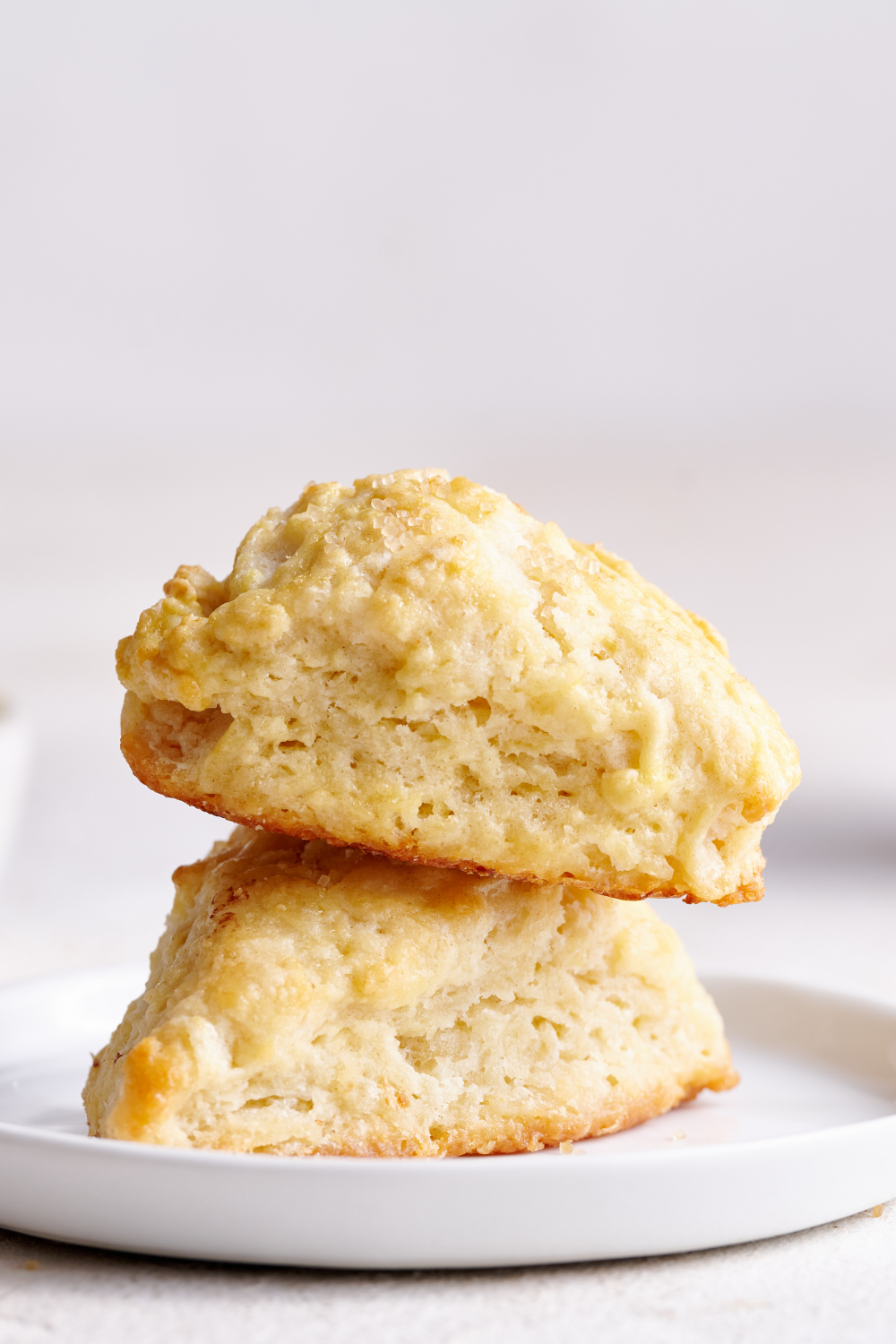
Many are bland and dense – but once I perfected this scone recipe, I realized how delightful they can be. They’re sturdier and heartier than biscuits because they contain eggs and more sugar.
Reader Love
These came out incredible! Thank you for the careful and detailed instructions! I chose to add ham, cheddar, and chives to mine and so did not include the sugar on top. I will be making these many more times with many more mix-ins.
–
What I love most about them (besides all. the. BUTTER.) is that they belong on any breakfast or brunch table. Totally customizable!
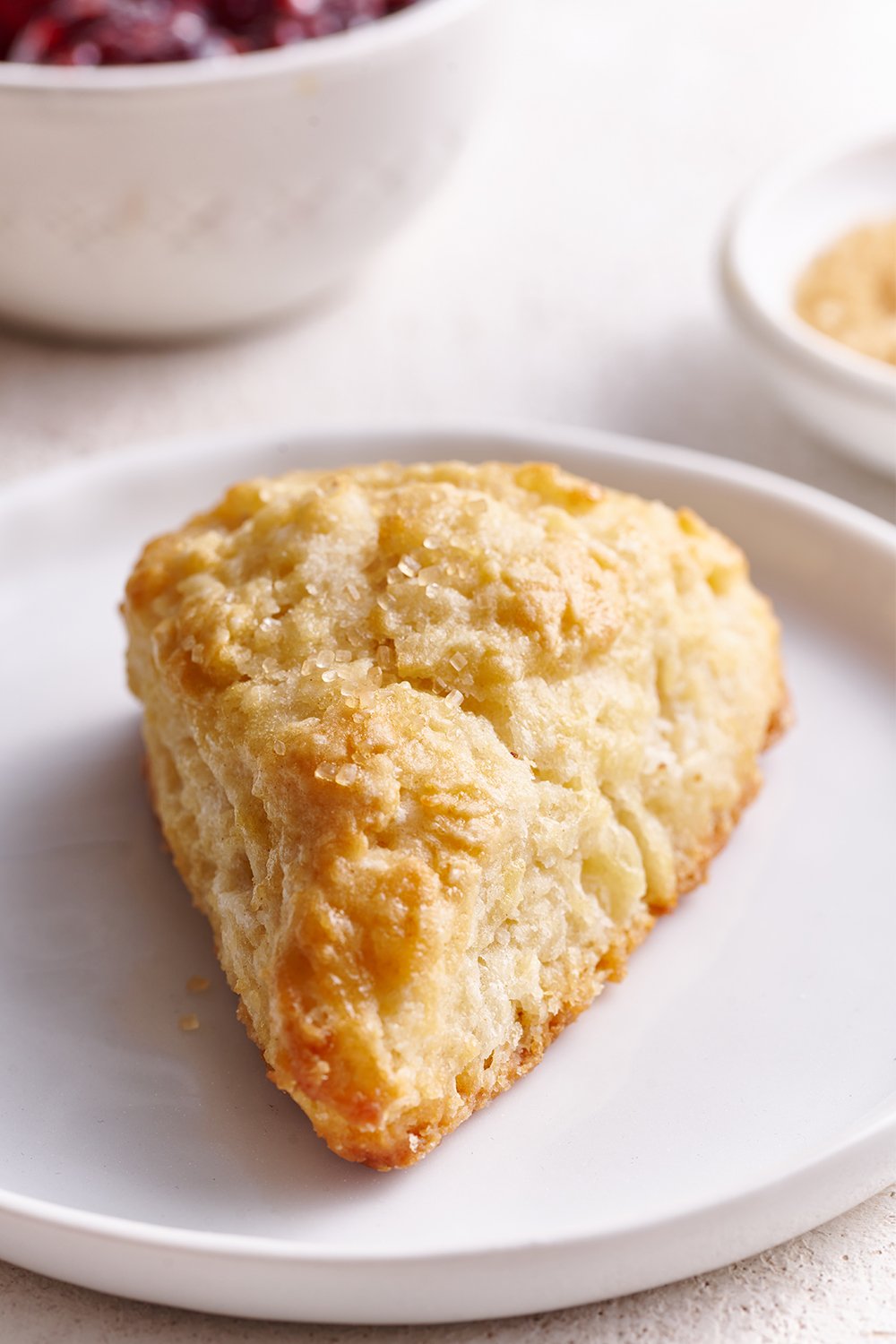
British publication The Mirror even noted how unforgettable this from-scratch recipe is in their recent article all about scones!
You can add nuts, citrus zest, chocolate chips, dried fruit like raisins or currants, or simply serve alongside flavored butter or your favorite jam and clotted cream (although this is more of an American scone recipe than British).
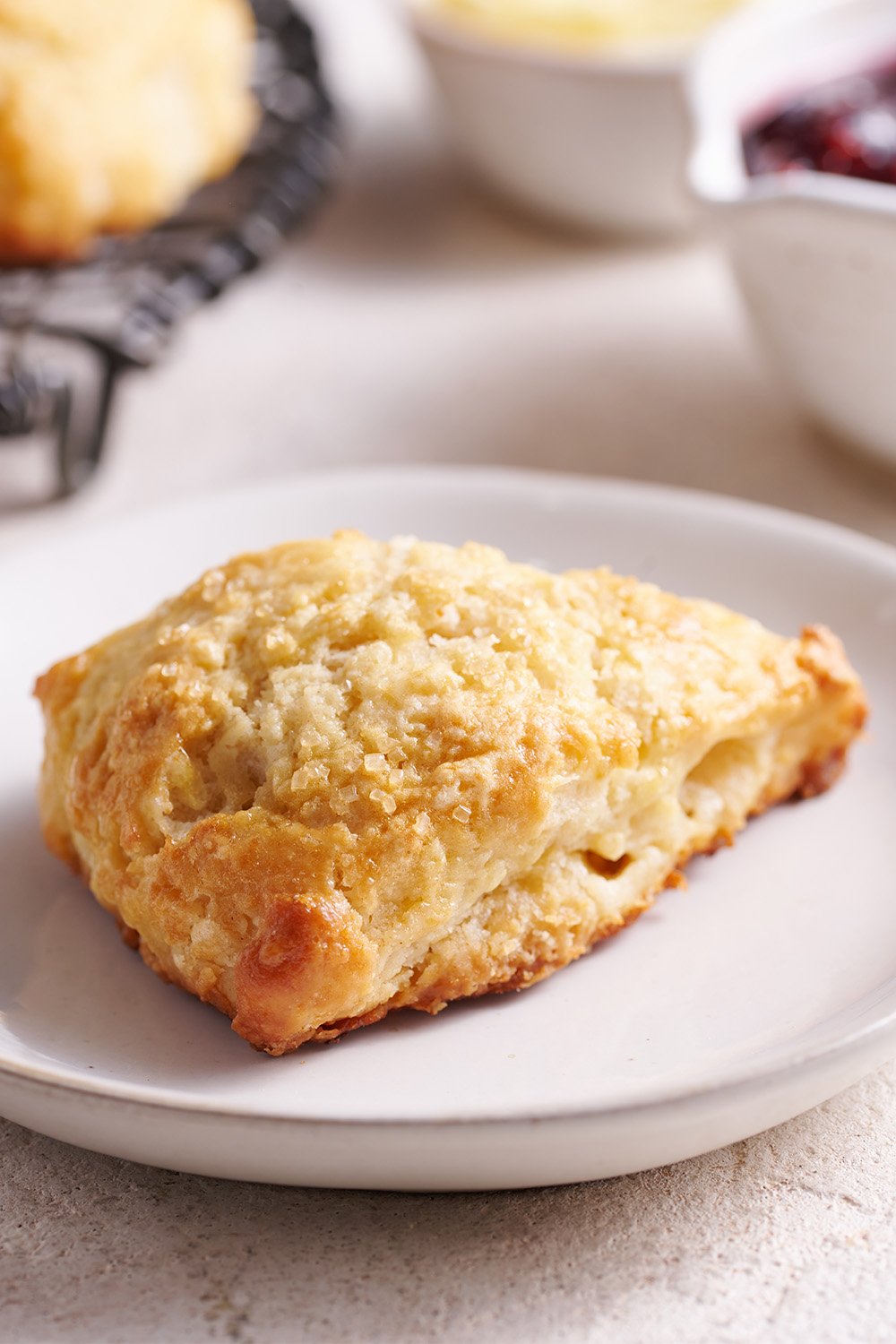

Sprinkle of Science
How to Make The Best Scones
Ingredient Notes
- All-Purpose Flour: I prefer to use Gold Medal AP flour, as I find it yields a more tender scone than flour made with a high protein wheat variety, like King Arthur Flour. If using a measuring cup instead of a scale, be sure to spoon and level.
- White Sugar: This is where scones differ from biscuits! A relatively small amount of sugar adds a touch of sweetness and encourages lightly golden brown edges.
- Baking Powder: A whole tablespoon is used to create tall and light scones.
- Baking Soda: A small amount also helps leaven the scones and will help create that light golden crust.
- Butter: It must be COLD and stay cold until the dough hits the oven, or you will not achieve flaky scones.
- Buttermilk: This is absolutely my preferred liquid. It will result in tender, taller scones because its acidity reacts with the baking powder and tenderizes the dough. It also adds a lovely tang to create more depth of flavor. I don’t recommend a DIY buttermilk substitute. You can use keffir instead, or heavy cream, which will alter the taste and texture. Learn more about the science of buttermilk here.
- Eggs: This is the other ingredient that distinguishes scones from biscuits. Eggs add richness, structure, and color.
- Vanilla: Don’t skip, unless you’re making a savory variation.
- Coarse Sugar: This is an optional topping ingredient, but I highly recommend it! You get pretty sparkly scones with a bit of a crunchy exterior. Yum.
Tips for Making the Dough:
- Whatever you do, do not overmix the flour mixture or dough or allow it to get too warm, to avoid flatter, tougher, and less flaky scones.
- My absolute favorite tool for making this dough quickly and easily by hand (so I don’t have to lug out my food processor) is this OXO bladed pastry blender.
- Use a marble pastry board to help keep the dough cool. If at any point you notice the butter become greasy and melty, pop the dough into the freezer for 10 to 15 minutes before proceeding.
- Once shaped, you can also place the baking sheet of unbaked scones in the fridge or freezer while the oven preheats, to ensure the butter remains nice and cold.
How to Make Tall, Flaky Scones: Bonus Tip
We’re stealing a trick from croissant baking that I also use in my Best Ever Pie Crust recipe! A little bit of “lamination” gets the scones to shoot up sky-high with tons of flaky layers. Don’t worry, it sounds more complicated than it actually is.
If this seems like too much work, just skip this step – they’ll still be delicious! Check out my How to Make Tall Scones & Biscuits article for more tips.

How to Laminate Your Scone Dough:
- If adding any mix-ins, fold into the dough now.
- Turn the craggly mass of dough out onto your work surface.
- Shape it into a rectangle.
- Fold the rectangle horizontally in thirds, like you’re folding a piece of paper to go into an envelope.
- Flatten it out into a rectangle again.
- Now fold it in thirds once more, but going the opposite direction. This will also help you to gently ‘knead’ the dough so it comes together into a more cohesive disk without overmixing it. Overmixing leads to rubbery and tough scones and biscuits.
Try to shape half your dough using this trick and half without to compare the difference. You’ll be surprised!
I demonstrated this during a live Zoom class with my Blueberry Scone recipe. Take a look at Benjamin’s laminated vs. un-laminated scones:

Storage Instructions
Scones are best served within a few hours of baking. This is why I recommend making the dough in advance:
Refrigerate the Dough: The shaped unbaked scones can be covered with plastic wrap and refrigerated overnight. Bake from the fridge as the recipe directs.
Freeze the Dough: Place shaped, unbaked scones inside an airtight container and freeze for up to 1 month. No need to thaw, you can bake from frozen, adding about 2 minutes to the baking time.
Flavor Variations
Feel free to get creative with add-ins! You can fold in about 3/4 cup of dried fruit, chocolate chips, nuts, etc. Dried fruit or frozen berries, like raspberries, work better than fresh.
- Cranberry Orange Scones
- Pumpkin Scones
- Blueberry Scones
- Chocolate Chip Scones
- Lemon Poppy Seed: Add 3 tablespoons poppy seeds + 2 tablespoons grated lemon zest to the dough.
- Cinnamon Sugar: Mix 3 tablespoons granulated sugar with 1/2 teaspoon ground cinnamon and sprinkle on the after the egg wash.
How to Make A Glaze
- 1 1/2 cups (188 grams) powdered sugar
- 2 tablespoons water, milk, or citrus juice
- 2 tablespoons unsalted butter, melted
- 2 teaspoons vanilla extract, or other extract
- Citrus zest, to taste, if desired
Directions: Whisk all glaze ingredients together until thick but still pourable glaze forms. Spread or drizzle over cooled scones and let stand until glaze has set.

FAQs
Can I substitute the buttermilk?
I don’t recommend it, it’s worth the extra trip to the grocery store, promise. Did you know you can even freeze leftover buttermilk? Learn more about buttermilk here.
If you need to substitute, you can use Kefir. Or, for a different taste and texture altogether, use cream instead.
If you’re baking outside of the U.S., some kind readers have let me know how they find buttermilk or something similar in their home country:
France: Lait ribot or lait fermenté
Italian: latticello
UAE: Laban
India: Chaas leftover from paneer
Britain: Tesco and Asda sell buttermilk
Sweden: Filmjölk
How are scones different than biscuits?
Generally, American-style scones contain eggs and sugar, whereas biscuits do not. This makes for a sweeter and denser product.
What’s the difference between American-style and British-style scones?
Generally, American-style scones are richer, denser, and often loaded with different flavor additions. British-style scones are often lighter, drier, and more plain because they are meant to be served with clotted cream and jam. My recipe is American-style.
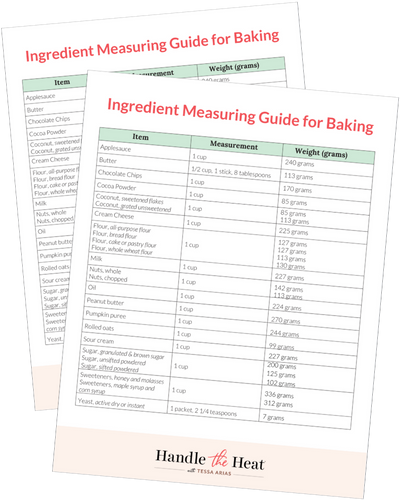
Free Ingredient Measuring Guide!
The key to consistent baking success is a click away. Sign up to get instant access to my printable Ingredient Measuring Guide now!
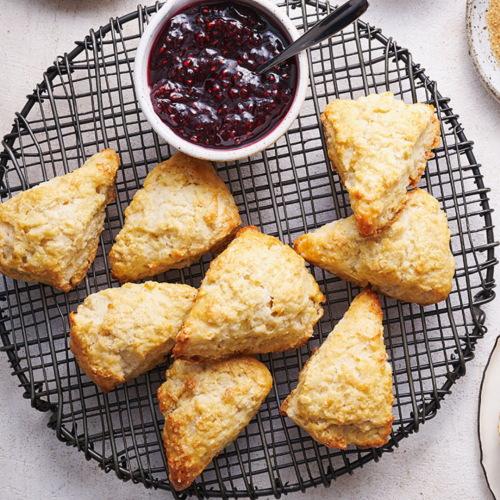
Classic Scones
Email This Recipe
Enter your email, and we’ll send it to your inbox.
Ingredients
- 3 cups (381 grams) all-purpose flour, measured correctly
- 1/3 cup (66 grams) granulated sugar
- 1 teaspoon fine sea salt
- 1 tablespoon baking powder
- 1/2 teaspoon baking soda
- 1 1/2 sticks (170 grams) unsalted butter, cold and cubed
- 1 cup (237 grams) buttermilk
- 2 large eggs, divided
- 1 teaspoon vanilla extract
- Coarse sugar, for topping
Instructions
- Adjust the oven rack to the center position and preheat to 400°F. Line two baking pans with parchment paper.
- In a large bowl, combine the flour, sugar, salt, baking powder and baking soda.
- Add the butter and cut with a pastry cutter or a fork until the butter is the size of large peas.
- In a separate bowl, whisk together the buttermilk, 1 egg, and vanilla extract.
- Make a well in the middle and add the liquid mixture. Mix until just combined. Don't over mix. If adding in dried fruit, nuts, chocolate, or other flavorings, do so now.
- Transfer the dough to a floured surface. *Optional Step: See Recipe Notes for lamination instructions.
- Divide into 2 equal parts. Lightly knead each into 3/4-inch thick, 6-inch diameter rounds. Cut each round into 8 wedges and place on your prepared baking pans. Space them out about 2 inches apart.
- Make Ahead: At this point, the unbaked scones can be covered and refrigerated overnight, or placed inside an airtight container and frozen for up to 1 month. If baking from frozen, add about 2 minutes to the baking time.
- In a small bowl, combine the remaining egg with 1 teaspoon water. Brush over the scones. Sprinkle with the coarse sugar.
- Bake for 12 to 15 minutes or until lightly browned. The scones are best served warm, or within a few hours of baking.
Recipe Notes
- Turn the craggly mass of scone dough out onto your work surface.
- Shape it into a rectangle.
- Fold the rectangle horizontally in thirds, like you’re folding a piece of paper to go into an envelope.
- Flatten it out into a rectangle again.
- Fold it in thirds once more, but going in the opposite direction.
- This will also help you to gently ‘knead’ the dough so it comes together into a more cohesive disk without overmixing it. Continue with step 7 above.
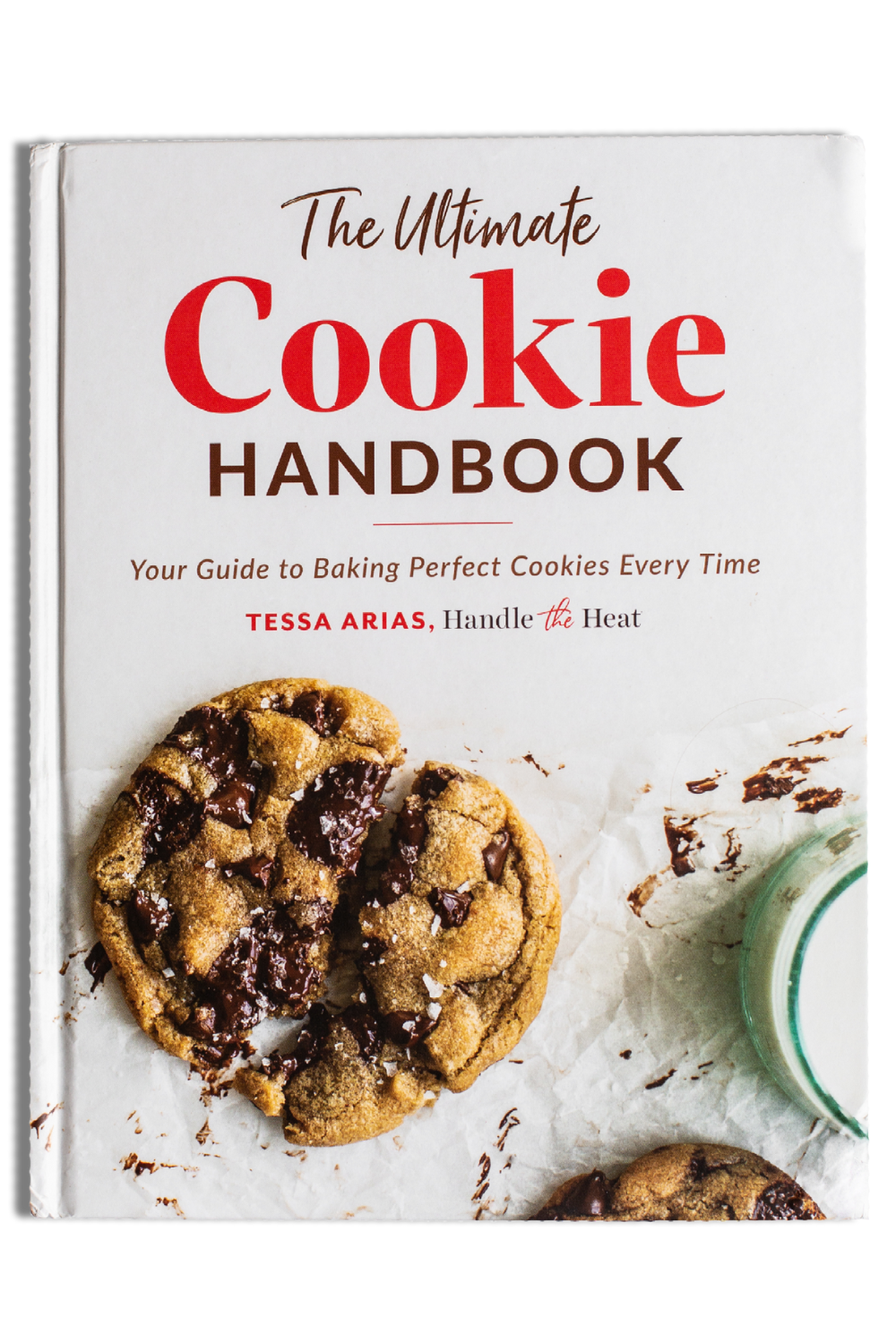
The Ultimate Cookie Handbook
Learn the sweet SCIENCE of cookie baking in a fun, visual way to customize your own recipes frustration-free. Plus, my best 50+ homemade cookies!
More Brunch Recipes You’ll Love:
- Savory Scones (made with shallots, jalapenos, and cheese!)
- Ultimate Muffin Recipe (customizable!)
- Quiche Lorraine
- Chocolate Chip Coffee Cake
This recipe was originally published in May 2017 and updated in 2023 with new photos and even more baking tips. Photos by Joanie Simon.
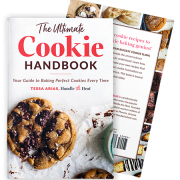
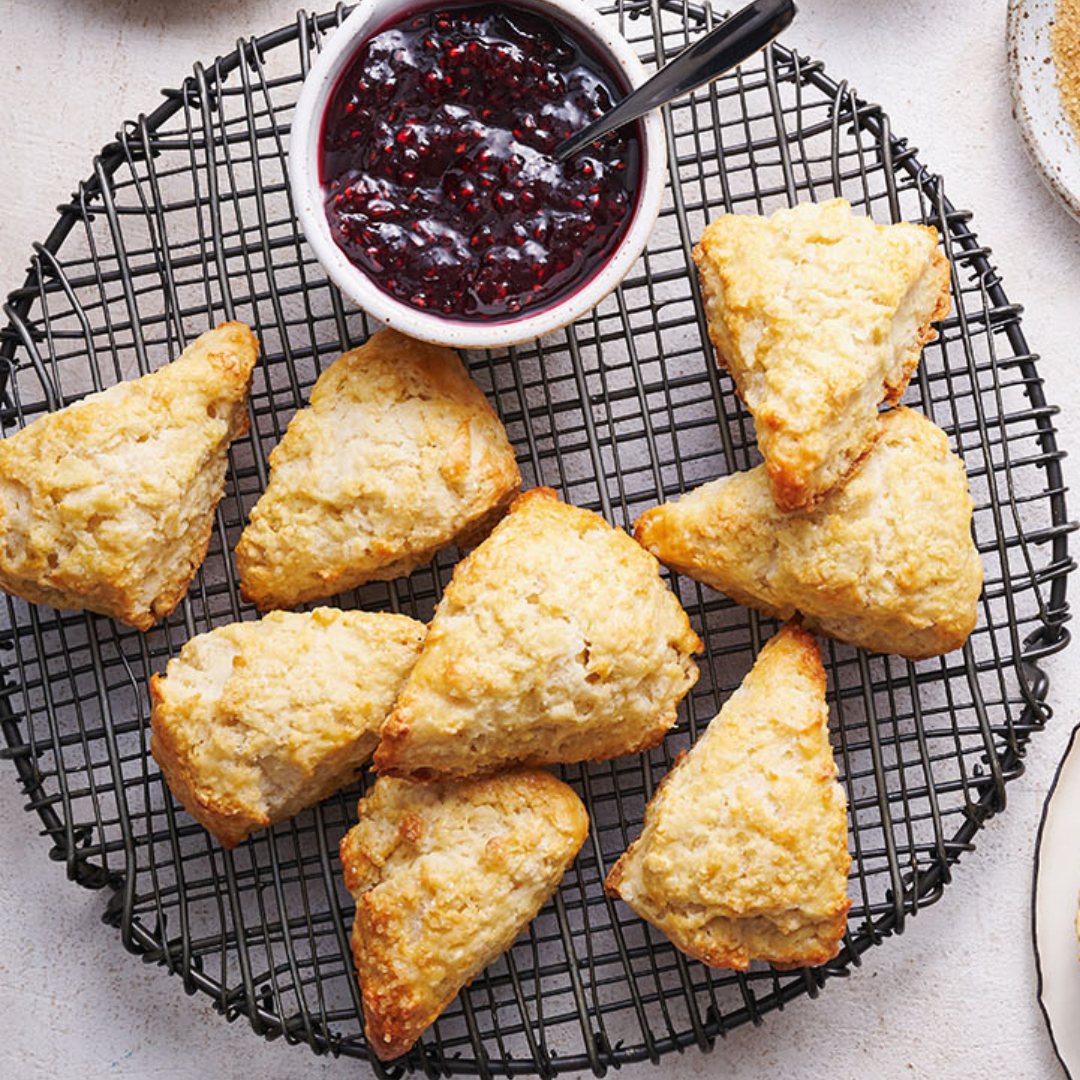








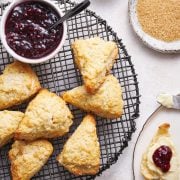
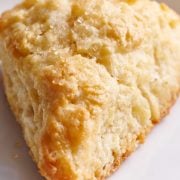

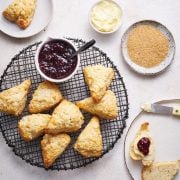

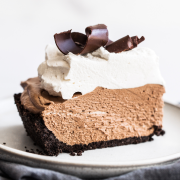


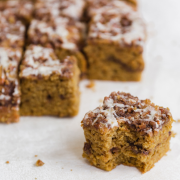



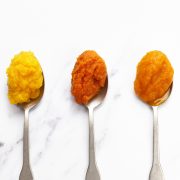

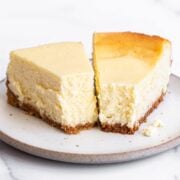
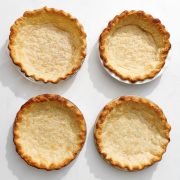








This scones are wonderful! I’ve tried with blueberries & chocolate chips. I was curious if you have any idea what the nutritional breakdown of your recipe is. Thank you for sharing!
These came out incredible! Thank you for the careful and detailed instructions! I chose to add ham, cheddar, and chives to mine and so did not include the sugar on top. I will be making these many more times with many more mix-ins.
So happy they turned out perfectly for you, Liza 🙂 Your savory mix-ins sound amazing!!
I am new to the game and love cinnamon scones but I can’t find a good recipe for making the chips. I would appreciate any help you could give me for making the chips as they don’t have any in Canada.
Thanks in advance
Paul
Hi Paul, so sorry but I’ve never made cinnamon chips before so I have no advice to offer you. Best of luck!
May we ask a butter question? My daughter said she heard that using a “Danish dough whisk” and grated frozen butter works beautifully for making scones. One of my daughter’s daughters pointed out that her mother thinks toasting a pop-tart is baking, “So, like, I mean, are we literally taking Mom’s advice? About *baking*?!”. But the oppositional grandling in question also a) is dead set on making Tessa’s scones and b) is, for unfathomable reasons, dead set against learning the use of the OXO dough cutter thing, recommended by Tessa above and delivered today by Amazon. So (the question, finally!), if you had a recalcitrant young baker to pull through Tessa’s scone recipe, would *you* settle for the path of least resistance, i.e. frozen butter and a “Danish dough whisk”? Will it work?
Hi John! Tessa has only used a Danish dough whisk for no-knead recipes, where you don’t want to overwork the dough or it’s too sticky to handle. She wouldn’t recommend using it for scones because it won’t be able to break up the butter as well as a pastry cutter or even a fork.
We haven’t tested grating frozen butter for this particular recipe, though it works beautifully in our Best Ever Pie Crust. The only drawback with grating is that the pieces are so fine, they can soften too quickly and blend in instead of leaving those bigger, pea-sized cold butter pockets that help create flakiness in scones. Tessa prefers cubing the butter, then freezing it while she prepares the other ingredients, before cutting it in with a pastry cutter to keep it cold and create that tender, flaky texture.
That said, experimenting is part of the fun! If they’d like to try the grater and whisk method alongside a batch using cubed butter and a pastry cutter, it could be even more educational (and a lot more memorable) than just following my advice 🙂